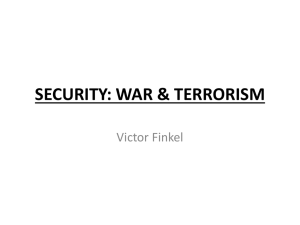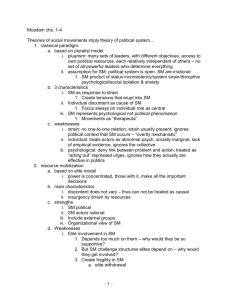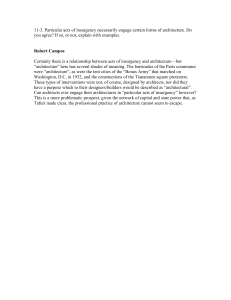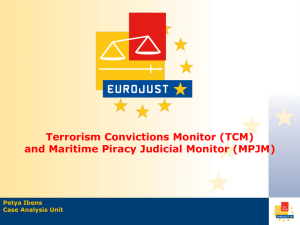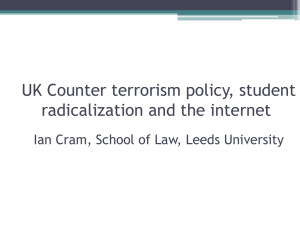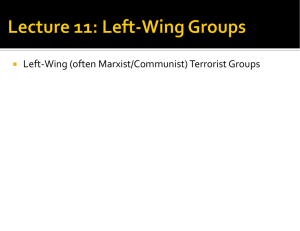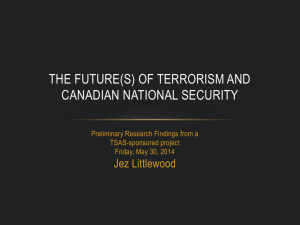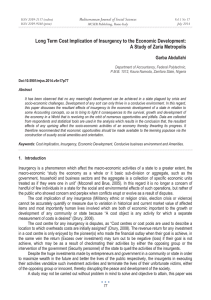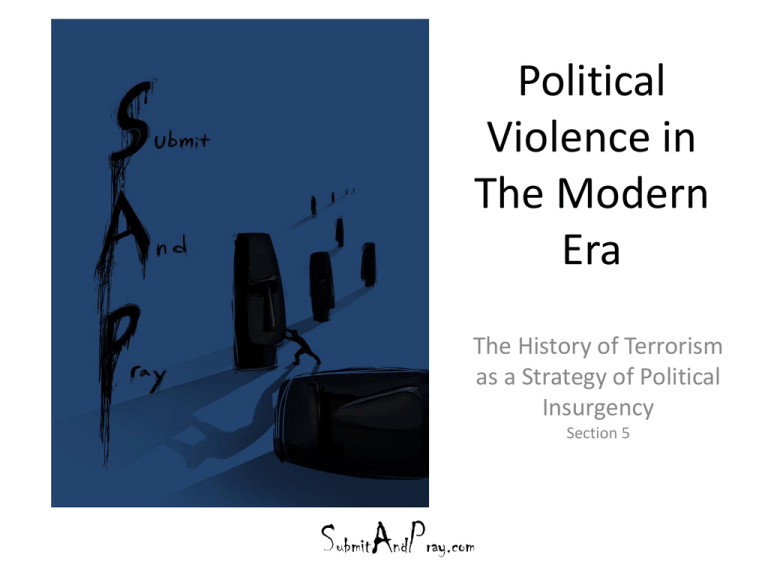
Political
Violence in
The Modern
Era
The History of Terrorism
as a Strategy of Political
Insurgency
Section 5
Political Violence
State Against State
Citizens Against Citizens
• Clash of sizeable armies
• Organized, planned, studied
• Capable of supporting
Bureaucracy
•
•
•
•
Common crime
Racial strife
Political strife
Vigilantism
State Against Citizens
Citizen Against State
• Ordinary and legal (arrest,
execution)
• Clandestine, illegal intimidation
• Organized or spontaneous
• Insurgency is an organized form
Forms of Insurgent Resistance
Coup d'état
Leninist Revolution
Revolution
Guerilla War
Riot
Non-Violent Resistance
Insurgent Strategies
Coup d'état
• A planned Insurgency at a high level
• Sudden
• Forceful
• Political
• Always planned to be swift
• Often military based
• Limited destruction
Guerilla Warfare
• Strategy of protracted war
• Diffuse
• Small formations
• Flexibility offsets inferior firepower
Leninist Revolution
• Tightly knit, clandestine part
organization
• Often long period of preparation,
including the recruitment, education,
and organization of a revolutionary
class
• Long preparation is to be followed by
short revolution
Terrorism
• Strategic choice
• Distinctly different than the other
forms of violence
• Weapons and targets are different
• Often used in conjunction with
Guerilla strategies
Comparing the Strategies
Form of
Insurgency
Coup d’état
Leninist
Revolution
Guerilla
Terrorism
Riot
Non-violent
Resistance
Insurgency
Level
High
Low
Comparison of Forms of Insurgency
Number
Duration of
Violence
Involved
Struggle
Few
Short
Varied
Many
Short
Great
Threat to
Regime
High
Great
Spontaneity
Low
Low
Low
Low
Medium
Few
Medium
Many
Varied
Small
Small
Varied
No
No
Yes
No
Long
Long
Short
Long
Great
Little
Little
No
No
No
Chaliand, Gerard, & Blin, Arnaud, Eds The History of Terrorism, from Antiquity to Al Qaeda
Berkley; University of California Press 2007
Chapter 2 -Merari, Ariel Terrorism as a Strategy of Insurgency Page 20 Table 2, Page 26 Table 3
Comparison of Terrorism, Guerilla War, and Conventional War as Modes of Violent Struggle
Conventional War
Guerilla War
Terrorism
Unit Size in Battle
Large Armies/Units
Smaller army-type
Small, usually less than
formations (platoons,
10 people
companies, battalions)
Weapons
All forms of weapons,
Light infantry but
Bombs, guns, some
land air and sea
sometimes artillery,
chemical, biological
small boats, planes
Tactics
Joint operations
Commando type
Kidnapping, bombing,
between service
assassination, hostage
branches
taking, Hijacking
Targets
Other military units,
Most targets are people State symbols, political
industrial and strategic
and property associated opponents, the public
targets
with government,
(and their sense of
military
security)
Intended Impact
Physical Destruction
Attrition of the enemy
Psychological
Control of Territory
Yes
Yes, at least partial
No
Uniform
Wear uniforms
Frequently uniformed
No
Recognition of War
Conflict limited to
Usually country specific Anything goes,
Zones
recognized geographical
opportunities exist
area
everywhere
International Legality
Yes, if within rules such If within certain rules, it No
as the Geneva
can be legal under
Convention
international law
Domestic Legality
Yes
No
No
Terrorism as a Strategy of Insurgency
Terrorist actions are attacks on the psychology of the
opponent.
Victory is to be achieved through
•
•
•
•
•
Propaganda
Intimidation
Provocation
Chaos
Attrition
Sources
Chaliand, Gerard, & Blin, Arnaud, Eds The History of Terrorism,
from Antiquity to Al Qaeda Berkley; University of California
Press 2007
Specifically much of this was from Chapter 2 -Merari, Ariel
Terrorism as a Strategy of Insurgency Page 20 Table 2, and 26
Table 3

